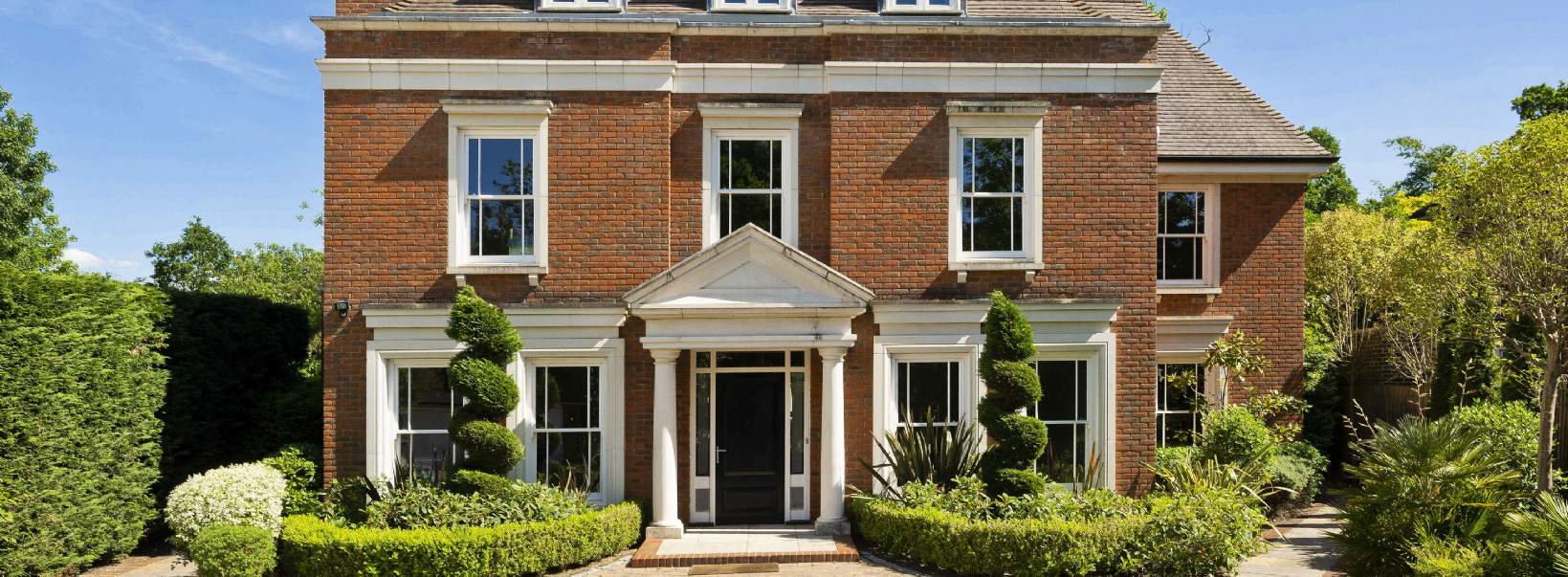The fortunes of different parts of the prime rental market across London and the commuter belt have varied dramatically, because the unique circumstances of the pandemic.
Lucian Cook
1. Ebbs and flows for rental values
The trends we have seen in the prime rental markets over the period of the Covid-19 pandemic continued to play out in the first quarter of 2021. Rental values of prime property through the commuter zone continued to rise, increasing by 2.5% on average, to bring annual rental growth to 5.4%.
In London, it has been more of a mixed picture. Rental values of prime houses increased by 0.4% in the quarter, while those of flats slipped by a further -1.7%, meaning they have fallen by -8.6% over the past year.
Much as it has done in the sales market, the desire for more space both inside and outside the home has driven a significant increase in rental demand for houses in the commuter zone. That has been most noticeable in the market for village properties closest to London, which have seen rents rise by 7.0% over the past year.
Demand in the commuter zone continues to come from a variety of sources. Long-term renters are competing with those looking to rent while they search for a suitable property to buy and others looking for a weekend property to enjoy as social distancing measures are gradually eased.
Such demand has depleted levels of available stock, coming at a time when the strength of the sales market has allowed many accidental landlords to sell. Other investors, put off by increased regulation in the sector, have also taken stock out of the rental market as they look to lock into current rates of capital gains tax, which are widely touted as a target for the Chancellor.
Together, this has meant 92% of our lettings agents in the commuter zone have reported a fall in the amount of stock available to rent. Most say that their market is fundamentally undersupplied, describing a notable increase in incidents of competitive bidding among tenants in what is undoubtedly currently a landlord’s market.
In London, the pace at which rents have fallen has eased, reflecting a more gradual reduction in the amount of stock available to rent and a return to rental growth in the family house markets beyond central London.
Other than in South West London, where they have stabilised, rental values of prime flats continued to fall, though by somewhat less than in the three preceding quarters. Over the past year, the flat market has borne the brunt of the increase in stock coming from short-term lets and reduced demand from sharers and overseas students. For now, it remains a tenant’s market, especially in highly supplied new-build markets such as Canary Wharf.
However, we do expect the balance to gradually shift back towards landlords in some areas as social distancing restrictions ease and international travel gradually resumes, and we are seeing early evidence of the impact of improved demand on letting prices.
Rental demand for houses in central London also depends on these measures to bring some urgency back to a discretionary market that historically has had a strong international tenant profile. It is one where rents have fallen by 5.6% in the past year, but it is also one where rents look overdue a recovery, sitting some 25% below levels seen in mid-2015.
By contrast, in the needs-based family house markets of South West and West London, rents have not only held firm but increased by between 2.0% and 2.5% over the past year. This part of the market has been supported by demand for properties with four or more bedrooms, reflecting the shift in tenant priorities given their experience of lockdown.
4. Outlook for prices and trends in prime rentals
While significant progress has been made in the nation’s vaccination programme and there is a clear roadmap for the gradual relaxation of social distancing measures, we still expect the circumstances created by the pandemic to shape the prime rentals market over the next six to nine months.
As a result, we expect the market to remain stronger for properties in the commuter belt and family homes in London.
Over the longer term, we expect demand for smaller properties and those in central London to gradually normalise. The pace at which this occurs will depend on several factors. Firstly, resumption of international travel. Secondly, a progressive improvement in corporate demand as the economic recovery gathers momentum. And thirdly, the return of young professionals and sharers looking for accommodation in proximity to their main place of work.
These factors, together with the progressive return of some stock to the short-term rentals market, underpins our forecasts for price growth in the prime London market from late 2021 onwards.
< View our latest Q1 2021 updates here.
For more information, please contact your nearest Lettings office or arrange a market appraisal with one of our local experts.
